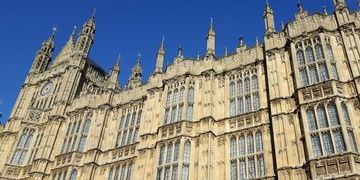Naomi Weir reflects on the 2016 autumn statement in which £2bn investment was announced for science and innovation.
Reflections on the 2016 autumn statement
23 Nov 2016
What a week. Craig David could write a song on it:
“Report stage of HE Bill on Monday
First reading in the Lords on Tuesday
£2bn announced on Wednesday….”
It was only last Monday that CaSE celebrated 30 years since its creation as Save British Science in 1986 in response to concerns about cuts to funding for research. One week on and the Prime Minister announced the biggest increase to R&D funding since 1979.
The Chancellor confirmed in his Autumn Statement that the £2bn announced by the Prime Minister on Monday is new money that will be for science and innovation to be distributed by UKRI. There has been a sense of learned sceptisism from the research community since Monday as to whether this would actually be £2bn of new, direct funding. But wonderfully it seems that scepticism was misplaced on this occasion and this is substantial new investment.
I have predominantly been working on facts and figures today. Our new R&D investment factsheet is a one-stop-shop for the headline figures. (We plan to keep this updated as new data releases come out so do save it as a bookmark to refer to in future)
The factsheet includes a look at what difference the new investment makes to the percentage of GDP the UK invests in R&D (with a few necessary assumptions and caveats) based on official ONS figures. The latest official figures though are from 2014 – pre-spending review. CaSE also keeps track of current and announced spending. So taking the baselines from the 2015 spending review, I’ve added the new investment and created a graph to show the make up of the research and innovation budget.

In the past, due to the make-up of the science ringfence, we’ve talked about the research base budget and about innovation spend separately. However, with the new funding sitting across Research Councils and Innovate UK (anticipating UKRI creation) I’ve included all these budgets together as the research and innovation base budget. Semantics aside. The new funding is substantial. Compare it for instance to the slice for the Global Challenges research fund (GCRF). This was the hard won announcement in the spending review that enabled the science ringfence to be protected in real terms instead of flat cash. It amounts to £1.5bn of funding spread over 5 years, with significant strings attached. It is dwarfed by the new funding announced today which totals £4.7bn over 4 years (scaling up from £425m in 2017-18, through £820m, £1.5bn, upto £2bn in 2020-21). For those with a good memory for numbers – £4.7bn is pretty much what the resource element of the science budget was frozen at from 2010-2015. This new funding effectively means we’ll have 5 years’ worth of funding in 4.
So the quantity of funding announced is a big change from what we’ve been used to in recent years. Recent decades even.
What I’ve been even more encouraged by though is some of the wording in the autumn statement document about how the funding will be allocated. Bear with me on this.
In contrast to ‘big shiny project’ syndrome – we hear that specific projects will be decided in due course, using value for money assessments and these assessments will be made by UKRI. The phrase ‘where relevant’ does leave some wiggle room for decisions to be made elsewhere but could relate to other areas of spending in the National Productivity Investment Fund. I’m in the mood for giving them the benefit of the doubt.

Especially as elsewhere in the document it speaks of the ISCF being managed by Innovate and RCs who will decide how funding is allocated through an ‘evidence-based process’. The rest of the £2bn will still be under UKRI’s care we’re told and will be allocated on the basis of national excellence and an (arguably much needed) increase in Innovate UK’s grant funding.

We’ve been asking for a move away from pet projects and piecemeal funding with Haldane being upheld and decisions made as part of a wider, long-term strategy by the leadership of the research community. And I’m optimistic that this autumn statement signals that the message has been heard.
So does this mean that we can put our feet up?
Well as ever the big picture is a bit more complex. We’ve got a prime minister stating that she wants the UK to be a go-to place for scientists, innovators and tech investors but that seems at odds with the wider policy direction and rhetoric both from No 10 and the Home Office on immigration. We have had substantial investment announced today, but there are many questions about funding, regulation and access to EU programmes and networks as a result of Brexit. And last week CaSE, along with others, called for the Government to aim for 3% of GDP to be invested in R&D by 2025. This announcement is the biggest step in that direction for decades but – even after accounting for anticipated increases in private sector investment – today’s announcement gets us to 2% of GDP by 2020. A rough calculation (not taking into account changes to GDP) suggests the £2bn takes us about a quarter of the way there in terms of the public sector portion. So we won’t be putting our feet up. But the support the government have shown for science today gives me hope that we might find a good resolution to the other challenges too.
Related resources

This synthesis draws out key policy implications from the findings of a report commissioned by the British Academy and CaSE. The systems-based analysis of the strengths and weaknesses within the UK’s innovation system, ‘From Research to Productivity: A Systems Analysis of UK Innovation Pathways’, was conducted by Cambridge Econometrics.

In 2024, the British Academy and CaSE commissioned Cambridge Econometrics and the Innovation and Research Caucus to conduct this systems-based analysis of the strengths and weaknesses within the UK’s innovation system.

CaSE’s comprehensive analysis of the measures that impact R&D announced in the 2025 Spending Review

CaSE’s response to the House of Lords Science, Innovation and Technology Select Committee inquiry into: Financing and Scaling UK Science and Technology: Innovation, Investment, Industry.